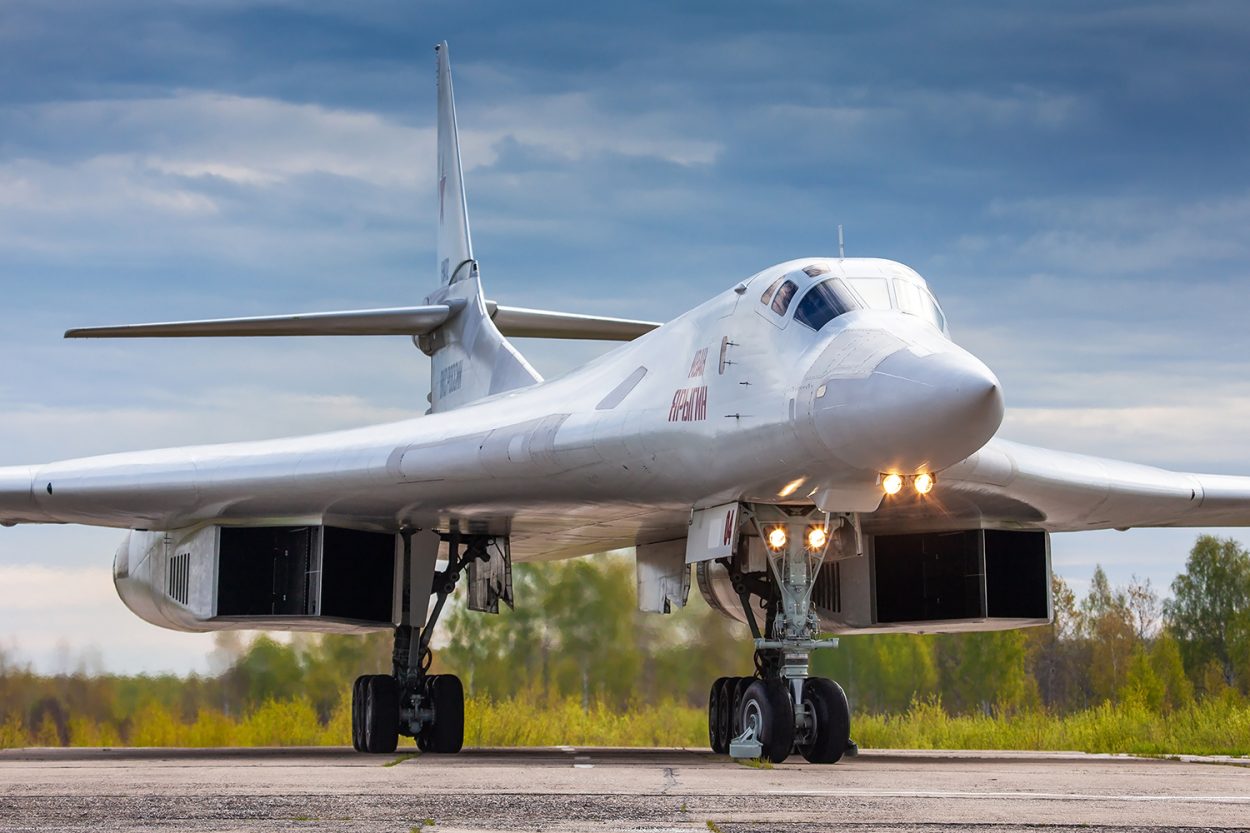A fully-upgraded Tupolev Tu-160M strategic bomber nicknamed the ‘White Swan’ performed its debut flight recently. The Tu-160M first entered into Soviet military service in the 1980s and its production went on till 1995.
Two decades later, Russian President Vladimir Putin ordered upgrading this aircraft to fill the Air Force’s capability gap likely to be caused due to delays in the development of the PAK DA low-observable (stealth) strategic bomber.
According to reports, the newly produced Tu-160M Blackjack strategic bomber has been tested at the factory airfield of the Kazan Aviation Plant, owned by Tupolev.
The new Tu-160M flew at an altitude of 1,960 feet and was reportedly in the air for 30 minutes, according to a press release from UAC. “The crew of test pilots of Tupolev PJSC performed maneuvers to check the stability and controllability of the aircraft in the air,” the statement added.
The official video of the aircraft making its maiden flight was also broadcast by the Russian Ministry of Defense’s official television station, TV Zvezda. It shows the swing-wing bomber preparing for its flight test program at the snowy Kazan Aviation Plant.
The decision to renew the production of the Tu-160M and to postpone the development of the PAK DA was announced by Russian Defense Minister Sergei Shoigu in April 2015 when he had visited the Kazan Aviation Plant.
In January 2018, a formal order for 10 new Tu-160M bombers was signed in the presence of Putin at the Kazan Plant. At that time, the cost for a single Tu-160M was put at approximately $2.7 million. The Russian Aerospace Forces or VKS had expressed a requirement for 50 Tu-160Ms eventually and the first two are due to be delivered sometime in 2022.

At present, VKS has 17 Tu-160s in its fleet which are operated by the 121st Guards Heavy Bomber Regiment at Engels-2 airbase near Saratov. The Blackjack first entered into the Soviet service in 1987 with the 184th Regiment in Ukraine.
Here, 19 Tu-160s had been stationed, however, these were claimed by Ukraine at the time of the Soviet Union’s disintegration. Eight of these aircraft were taken back by Russia in 1999 while the rest were scrapped.
With limited production in the 1990s, Russia received six additional aircraft with the last being delivered in 1995. After that, three more aircraft had been produced by utilizing partially built airframes. The latest of these were delivered to the VKS in 2018.
Deeply modernized Tu-160M missile bomber has succesfully performed its maiden flight with new serial engines NK-32-02 at the airfield of Kazan Aviation Plant. The flight took place at an altitude of 6,000 meters and lasted 2 hours and 20 minutes. pic.twitter.com/YoSkTIU5Ie
— UAC Russia (@UAC_Russia_eng) November 3, 2020
Besides the launch of the new aircraft, the Tu-160 itself has undergone a series of upgrades. The first phase of the aircraft, earlier known as the Tu-160M1, incorporated advanced navigation and autopilot systems. It also got rid of the redundant bomb-sighting system. This variant of the Tu-160 had entered the service in late 2014.
What’s New In The Upgraded Tu-160M?
The upgraded variant of the Tu-160 was originally known as the Tu-160M2 but is now only referred to as the Tu-160M.
UAC claims that 80 percent of the aircraft’s systems have been upgraded. “Tu-160 is one of the largest and most high-tech projects in the aviation industry”, Yuri Slyusar, UAC General Director, said in a statement.
“The implementation of this program required not only the renovation of production facilities but also the creation of a fundamentally new digital environment for working on the project. A number of aircraft design bureaus participated in the preparation of digital documentation for the project.
The fundamental importance of today’s event is that the new machine has been completely rebuilt from scratch. The systems and equipment in the new machine have been updated and modernized by 80 percent”, he added.
The aircraft is also equipped with an all-new digital mission avionics suite and is installed with large-screen cockpit displays. It features an advanced NV-70M Novella radar and electronic warfare suite.
A partially-modernized prototype of this aircraft took to the air in January 2018, The Diplomat reported at that time. The first fully upgraded aircraft took its maiden flight in February 2020.
“We have restored the full production cycle of the Tu-160, but already in the M modification, using modernized engines, modernized aircraft control systems, navigation systems, and weapons control systems”, Denis Manturov, Minister of Industry and Trade of the Russian Federation, further explained.
“The modernization of the Kazan Aviation Plant played an important role in restoring the production of unique aircraft: the equipment of the shops, the flight test base was updated, the world’s largest installation for electron beam welding and vacuum annealing of titanium was put into operation.
Today we see significant prospects for the Tu-160 platform: further development will make it possible to use it for new types of weapons, including promising ones,” he said.
One of the key advancements made in the new Tu-160M is the adoption of new engines. As the production of the original 55,000-pound thrust Kuznetsov NK-32 powerplant had been stopped in the 1990s, an improved variant was launched.
The new engine, designated as the NK-32-02, is believed to provide the same thrust as the original. Owing to the increased efficiency of its internal redesign, it is claimed to provide a 13 percent increase in range. A Tu-160M fitted with the new engines took to the air for the first time at the Kazan plant on November 3, 2020, as reported by Business Insider.
- Written by Kashish Tandon/EurAsian Times Desk
- Contact the author at: kashishtandon21@gmail.com
- Follow EurAsian Times on Google News